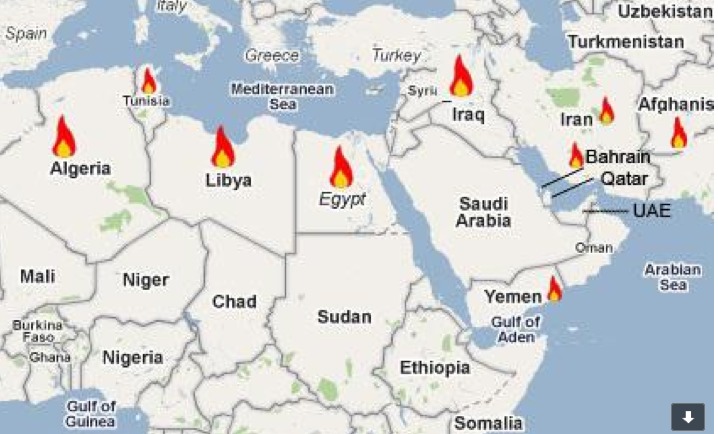Investors naturally tend to think in terms of money. That is well and good, but occasionally it can cloud our understanding of the motivations of others.
Saudi Arabia has plenty of financial reserves. Even at current oil prices it can continue it’s spending for years before it has to go even $1 in debt.
The House of Saud, and here I’m specifically talking about the people at the head of the family not the country of Saudi Arabia, also have all the money they need.

$1.4 trillion
While it’s difficult to separate the families assets from the countries, the House of Saud is estimated to be worth approximately $1.4 Trillion. It’s hard to put this in perspective but I will try.
- First lets get rid of the shorthand, $1.4 trillion is 1,400,000,000,000 dollars. $1.4 trillion is to $1 billion as a day is to one single minute, something you barely even notice. Can you imagine that?
- If you assume a 7% return, the House of Saud can spend $270 million per day without ever dipping into principle. That’s enough to buy a brand new Boeing 777-200ER jumbo jet every day for the rest of your life.
According to Pagetutor.com this is what a million dollars in $100 bills looks like:

Power matters
The analogies and illustrations are not designed just to amaze everyone. Rather I’m trying to emphasize that the House of Saud has plenty of money. More money than they know what to do with.
Therefore, more money is probably not the primary goal. Retaining and preferably growing power is more likely to be their real motivation.
People generally do what they think is in their own best interests. All that oil money and the power it supports will stop for the House of Saud if they are no longer the rulers of Saudi Arabia and the effective heads of the oil central bank commonly referred to as OPEC.
Challenges
And the Al Saud’s probably have good reason to feel threatened:
- Both Iran and now ISIS are a threat to the House of Saud. These threats receive significant funding from oil revenue’s and have nowhere near the financial reserves of Saudi Arabia. A common strategy in war is to starve the resources of one’s enemy.
- Fracking and alternative energy are a threat to OPEC and the House of Saud. One unlike any other because they are neither in OPEC nor even controlled by a large central power than can be negotiated and dealt with. This cancer of fracking (from the Saud’s point of view) can spread to other regions of the world further marginalizing OPEC.
- Reduction in US willingness to provide military support in the Middle East is a direct threat to the House of Saud. The US has long provided military support to the region as well as both implied and direct military support specifically to Saudi Arabia (anyone remember where we first staged our military assets before invading IRAQ?). This direct military relationship with the US helps the House of Saud to stay in power.
Keep in mind, the House of Saud is an absolute monarchy and the Kingdom of Saudi Arabia formed relatively recently (1932) by military conquest.
This conquest, followed quickly by the fortunate discovery by American’s of oil on their newly conquered lands, led to the House of Saud’s incredible wealth.
Tough neighborhood
The current Al Saud’s are not so many generations removed that they don’t know this. They fully realize their continued existence is threatened and dependent on maintaining power.
In the last few years, the House of Saud has seen rulers of countries all around them– Iraq, Libya, Afghanistan, Egypt, Tunisia and Yemen– overthrown and in some cases executed.
Shia Iran to the east, a traditional nemesis of the Sunni House of Saud, is developing the bomb. ISIS poses a significant and growing fundamental challenge to the north.

Oil influence
Maintaining production and allowing oil prices to fall helps the House of Saud on a number of fronts, particularly if viewed from through the lens of power.
- It significantly reduces the political and military threats from Iran and ISIS by starving them of resources.
- It cracks the whip on the other members of OPEC who have been cheating on production quotas. This is particularly true for those who can least afford the decline in income and have been cheating the most: Iran, Venezuela, etc. In doing so, it serves a policing function and re-establishes Saudi leadership in the cartel.
- It helps to ensure the OPEC cartel does not get broken up by the outside uncontrollable influences of fracking and alternative energy.
- It garners the favor of the US government (and China) by supporting their economic growth as well as reducing Russian, Iranian, Venezuelan and ISIS resources.
U.S. ties
That the US started bombing ISIS, and at least halting their military pullback from the region, just a few months before the House of Saud cut oil prices may be a coincidence (or not).
However, there is little doubt the House of Saud has a direct line to the US government and the CIA. It is somewhat ironic that the US pullout from the Middle East and the Arab Spring, strife in the region, has ultimately led to lower oil prices, but that is where we currently stand.
Maintaining production and allowing oil prices to fall, is just one more way the House of Saud is using money to maintain power. They can afford to lose a few hundred billion dollars, they can’t afford to lose their control of Saudi Arabia and OPEC.
So when we investors consider how long oil prices are likely to stay at current levels, we should not think just about monetary influences. In this case, the maintenance of political power by the House of Saud is probably a significant driver.
The House of Saud might very well be willing to endure oil at $65 per barrel for years if that is what is necessary to maintain their power.
In my opinion, it is not even crazy to imagine the Saudi’s sovereign wealth fund (SAMA) taking positions in alternative energy plays such as Seadrill (SDRL), Linn Energy (LINE), First Solar (FSLR), Renewable Energy Group (REGI), and Tesla (TSLA).
Photo credit: Kimon Berlin via Flickr Creative Commons
DISCLAIMER: The investments discussed are held in client accounts as of November 30, 2014. These investments may or may not be currently held in client accounts. The reader should not assume that any investments identified were or will be profitable or that any investment recommendations or investment decisions we make in the future will be profitable. Past performance is no guarantee of future results.



